Everything You Always Wanted To Know About Pressing Apples Into Cider
The Source asks, How do you like them apples?!?!?!
Sometimes, inspiration strikes. Other times, someone gets in touch with a stirring question that needs immediate and thorough investigation. The muse has many ways!
Last week, a reader messaged me on Instagram to ask if I had any insight/opinions/even basic knowledge of what to look for when it comes to apple presses for cider. I had posted a video (below) of cider-in-action from Apple Magic at the Langlais Art Preserve, thus participating in what that particular social media platform is so good at doing: Making me seem like I knew something about which I actually know absolutely nothing. I did already have an idea of what I’d write for this week’s newsletter, which immediately became a ghost of an idea—finding out more about apple presses was now… pressing.
I’m happy to say that I have a pretty good idea of the apple press landscape now, which, you know, is something.
A quick pit stop to say that you absolutely can juice an apple with a normal juicer. I have now read enough subreddits about this to confirm. The issue seems to be that if you have many, many apples to process, a home juicer will simply take too long. It’s not for making cider at scale.
Onward!
Before you press your apples into cider, you will need to shred them into the smallest pieces possible: Apple pulp, if you will. The more surface area to press, the more cider! Take a look below!
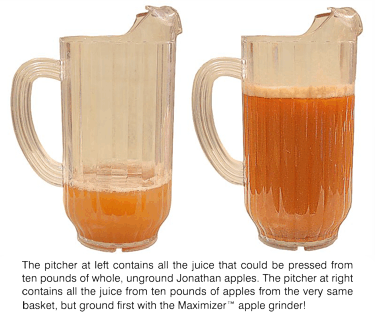
There are many ways to do this. Some say impaling them on the point of a picket fence is a good way. (Although, again, scale—and sanity—become a problem.) Food processors are also good, but not-so-scalable.
For bulk apple pulpin’, there are both manual and electric options. Electric models seem to mostly be these long stainless steel tubes with a hopper up top and a wide, pulp-spewing spout at the base. Here’s one at a popular source for cider stuff, Pleasant Hill Grain; and another from Winemaker’s Depot. For a DIY-ish option, some people recommend using a new, clean garbage disposal!
There are also hand-crankable grinders: This one is called an Apple Eater, which is cute. This one can perch on top of any bucket—convenient! There are also apple grinders that can attach directly to the press itself—motorized and not—and some that come packaged with the press, too. Some of those below.
Pressing on. (I’m so sorry.)
There seem to be three pillars of apple press technology: (1) a crank-style press, (2) a hydraulic press, and (3) a bladder (“hydro”) press.
Crank Apple Presses
If you were to close your eyes and visualize “cider press,” this is likely the kind you might see in there. You turn a crank; the press goes down, slowly applying more and more pressure; fresh and exciting cider cascades out. Within this concept, there are, naturally, a few variations. The primary being: wood vs stainless steel. Wood is more traditional (and tbh, prettier), but requires upkeep and conditioning. Stainless doesn’t require those things and is apparently far easier to clean.
Because my priorities are almost always at least 80% aesthetics, I favor these handmade beauties by Correll Cider Presses. I mean, come on! One side is the apple shredder—motorized for your convenience—the other is the press.
Runner up in this wooden category is The Pioneer from Happy Valley Ranch. For smaller volumes, but greater portability, I’m also pretty taken by the Yakima. This one has me a little price-skeptical, but people had nice things to say about them online.
Stainless-wise, Reddit loves these Lehman presses (above), which have an option to add on a grinder as well. Another popular option is The Maximizer (!) from Pleasant Hill Grain. In tabletop options, the MacIntosh was widely lauded, but is maybe discontinued? I found this one on clearance.
Last in the crankin’ category: The kind you make yourself. This isn’t technical stuff here. A compound bucket, drilled with holes and some way to apply consistent pressure is all you need. Here are some pretty simple instructions for making your own cider press.
Hydraulic Apple Presses
These are pretty fun. Essentially you are using a hydraulic jack to put space between the press and some sort of scaffolding. Easy to DIY with a car jack!
Here’s a neat video showing how to set up a hydraulic apple press—I actually said “Wow!” out loud and alone, to myself, while watching this video.
And another person, this time on Instagram, with a rig they made themselves.
Hydraulic presses really look like serious business, right? This one above and a second somehow even more serious one come from Winemakers Depot, yet again. They are also sometimes be called “Ratchet Presses.” Which is good to know because sometimes ‘hydraulic’ get confused/mislabeled with our next category…
Bladder Apple Presses
These are also really neat! They have a rubber “bladder,” essentially a big, sturdy balloon, in the center. You fill the drum with apple pulp, hook up your hose, and let water pressure do the rest. Sometimes these are incorrectly labeled “hydraulic” because, I guess, “hydro” is confusing? Anyway, they’re different.
Here’s a video showing how you might set up a Hydropress, which is a type of bladder press.
Speidel was the original manufacturer of the bladder press and appears to still be the most popular in this category. Certainly, this technique seems to be the least labor intensive and most passive way to press cider. Does it take the fun out? We will have to see. The man in the video discusses going to drink tea… a lot.
Ok, well, Ashley on Instagram, I hope that answers your questions about cider presses. Or, at least, gives some sort of groundwork to then make some decisions.
A final note before I give you your life and attention back: I did read over and over again that you absolutely do not need to run out and purchase one of these guys. Depending on your access, local stores, particularly brewing supply shops, should have presses and grinders available to rent. Definitely do some poking around.
Which do you think you’d choose? Or do you already have one at home? I’m curious to know.
That said, I will still be over here pining for that fancy wooden rig up there. But I am what is considered a lost cause.
Good price, good condition Kei truck in Illinois! (Also love this color!) (LINK)
If you need to open cans in the most extra way possible. (LINK)
Very good beach chairs in Arizona, where there is no beach. (LINK)
We are experiencing full on Gilded Age fever over here, which is only part of the reason I needed to gawk at this listing for so long. (LINK)
Inspired by: Prospect Cottage
PSA: This is an IMAGE HEAVY missive, so not everything will display if you are reading via email. Simply click the heading above or “read entire email” or something similar at the very end to, you know, see it all. Thank you!
Opining on Pine
About a month ago, I dragged my family about two (plus) hours from our house, deep into Western Maine, to buy and haul back a nine foot long, pine Shaker bench. Once we got home, the finish, which looked so perfect and lived-in on Facebook Marketplace, now appeared to be just grime after all and well, you know,
The Source: Why I'm Sitting At The Kids' Table
The year is 1996 and I am 11 years old, deep in the 90s catalogue years—and something new arrives. It is The Land of Nod and it sells home decor and bedding specifically for kids. And it’s cool—not Disney licensed; not bows or monster trucks—cute stuff that I am


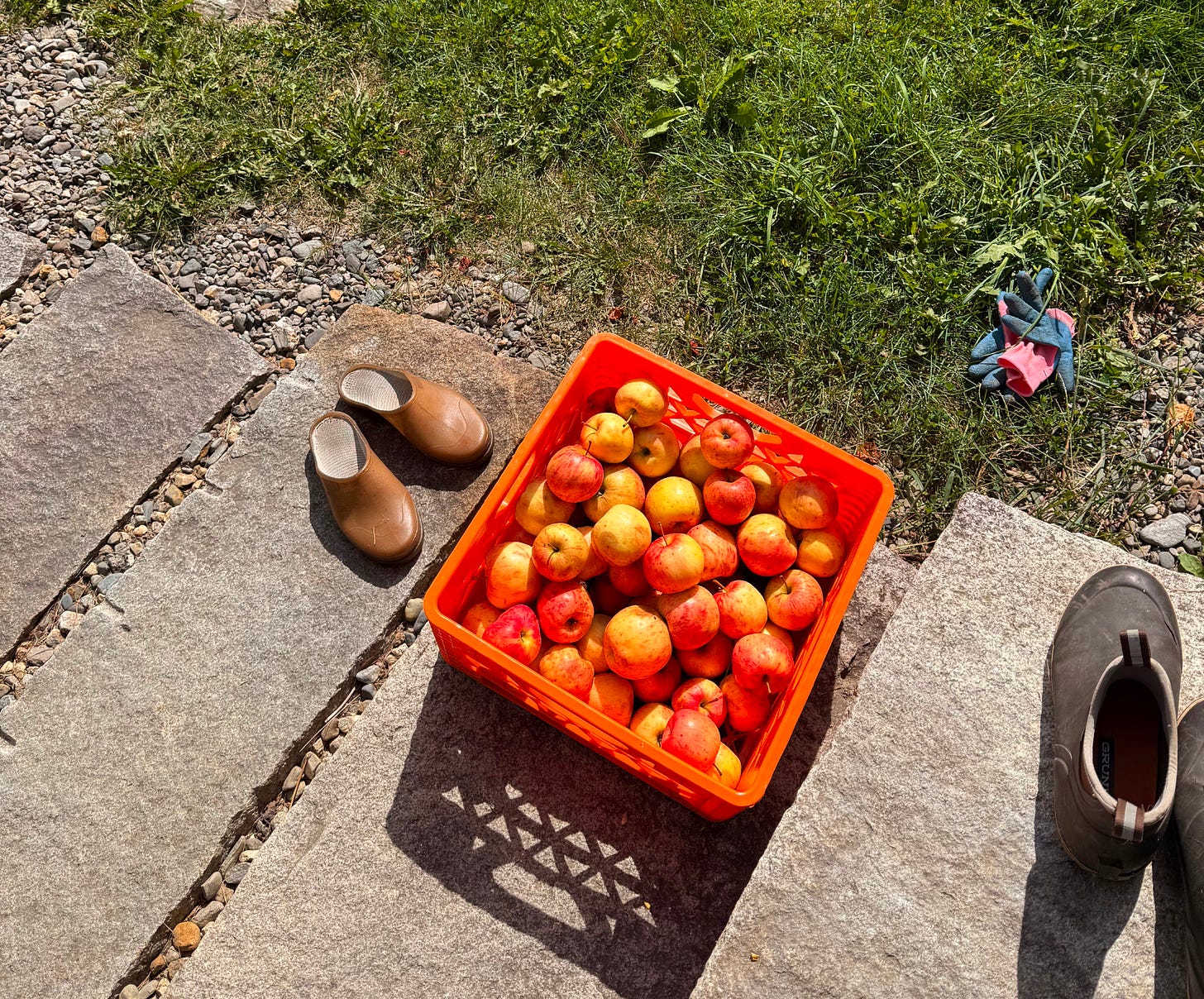


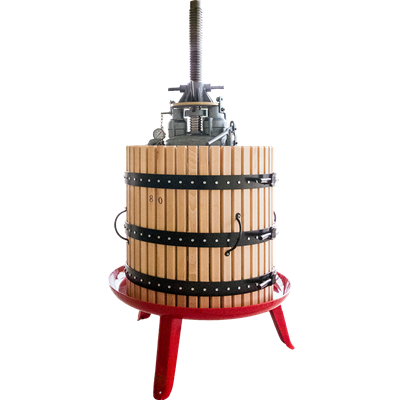
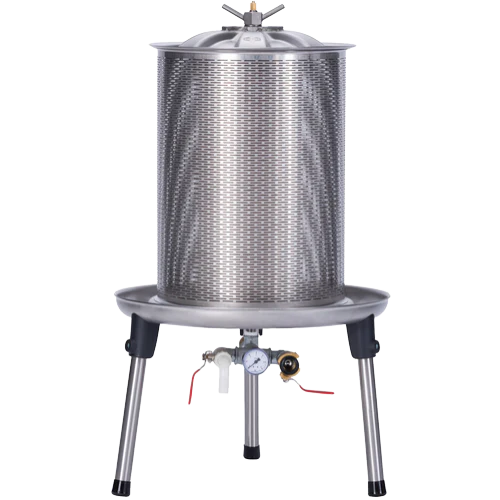


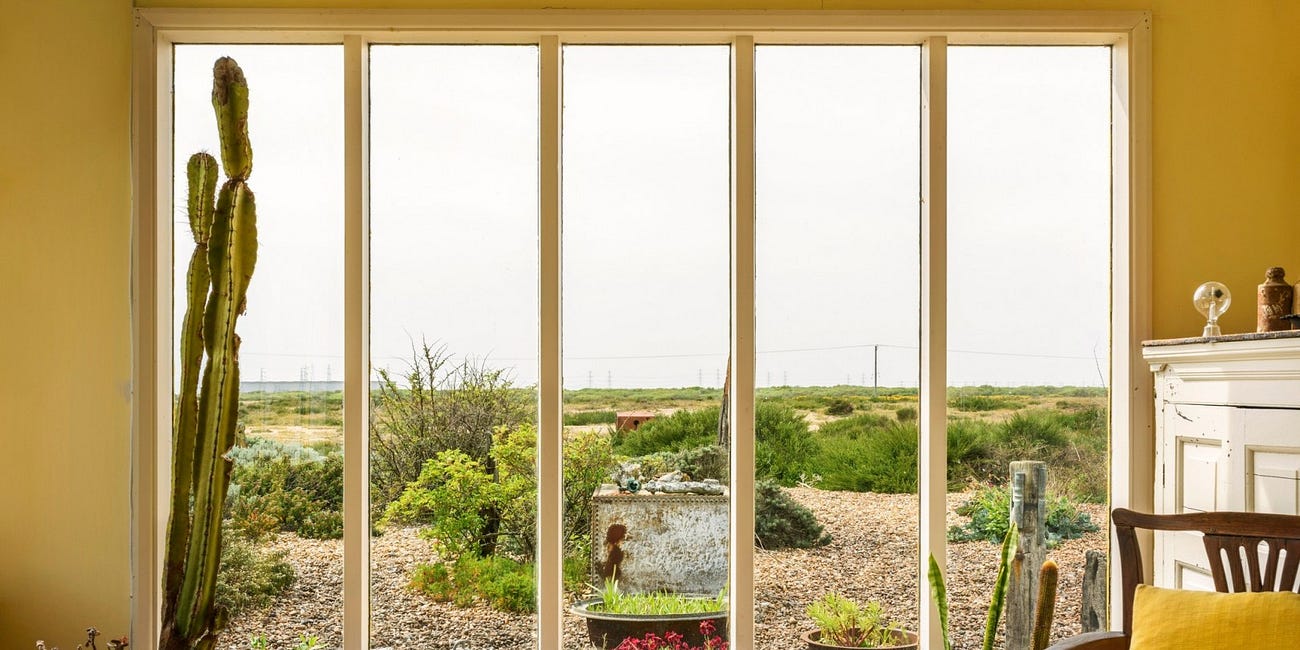


Several years ago a friend rigged up a makeshift apple grinder using a cheap garbage disposal over a bucket, and also made a DIY hydraulic press like the one you linked to (though far less…sturdy). It was an incredibly fun evening shooting apples through the janky garbage disposal set up, heaping the mush into a pillowcase, and then using a bottle jack to press it.